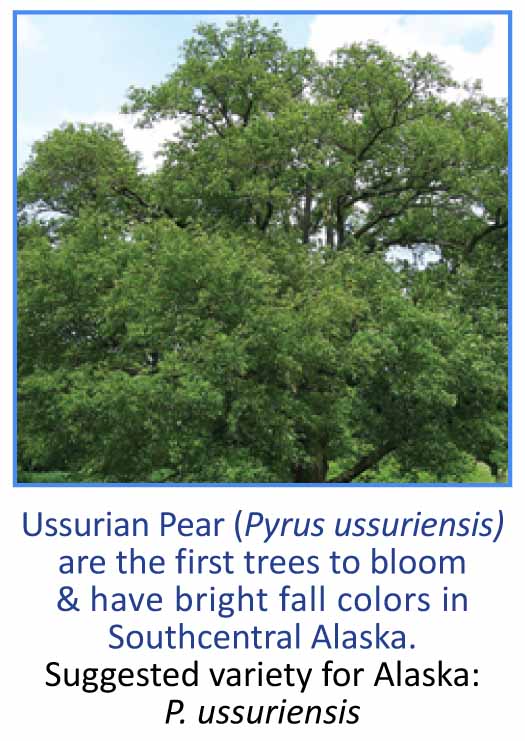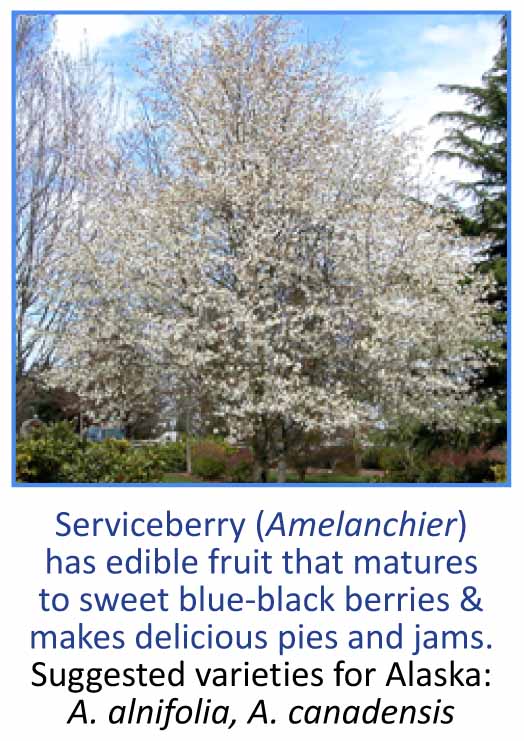Invasive Plants and Agricultural Pest Management
Welcome to Alaska's Invasive Plant Program. Our program coordinates prevention, outreach and management strategies for invasive plant issues through collaboration with land managers, agencies, organizations and policy makers across Alaska. These efforts are guided by the implementation of our Strategic Plan and relevant noxious weed regulations and policies. Our goal is to help keep Alaska's pristine landscapes and natural resources free from impacts of noxious and invasive plants.
PMC Programs
- PMC Home Page
- Horticulture
- Industrial Hemp
- Invasive Plants
- Plant Pathology

5310 S Bodenburg Spur
Palmer, AK 99645
Phone: 907-745-4469
Fax: 907-746-1568
Mon. - Fri.
8 a.m. - 4 p.m.
Click Map For Directions
View Larger Map
European Bird Cherry (Prunus padus)
AK Natural Heritage Program Invasiveness Ranking: 74
- Biology
- Impact
- Distribution
- Taking Action
- Resources
Growth
• Grows up to 30 feet tall
• Sprouts from its trunk, stems and roots when cut
• Is rounded in shape, has low branching crowns, and its multi-stemmed growth can form dense thickets
Bark
• Bark is relatively smooth and grey to brown
• Visible pores on the bark are called lenticels
Leaves
• Leaves are ovate, elliptical and thinning at the tip
• Leaves are dark green with 2 small glands at the base of them
• Edges of the leaves are sharply serrated
Flowers
• Flowers are white, small and very aromatic
• Flowers are arranged in drooping cylindrical clusters called racemes
• In Alaska, blooms are seen between late May and early June
Fruits
• Small, bitter black cherries ripen in late summer
• Birds eat the cherries and spread the seeds to new areas
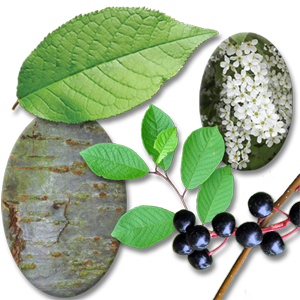
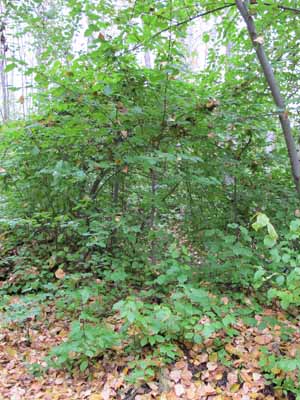
- • Trimming & cutting European Bird Cherry stimulates growth!
- • Root suckers and fallen trees can create thickets of new trees
- • Can create defense chemicals called cyanogenic glycosides
- • In rare circumstances, these trees can cause cyanide poisoning of moose
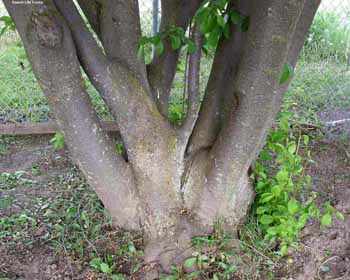
- • Native to Northern Europe and Asia
- • Survives prolonged temperatures to -33 degrees Fahrenheit
- • The northernmost extent in Alaska is the south-side of the Brooks Range, north of the Arctic Circle
- • In Alaska, it has been planted in residential landscapes, parks and at a few remote cabins
- • It is rapidly invading riparian stream sides and natural forests in Anchorage and Fairbanks
- • Takes over the understory of forests and forms thickets where native plants once grew
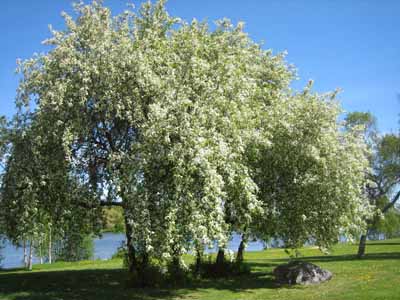
Cutting alone is not an effective solution because this tree readily re-sprouts from stumps, stems and roots (including fragments)!
Seedlings and small trees can be pulled by hand. Trees up to 2" in diameter can be removed with a tool called an "Uprooter" as shown below. Note that ALL of the roots must be removed, and the tree disposed of, or it will re-sprout!
Systemic herbicides are the most effective way to control European Bird Cherry because they are absorbed directly into the tree's vascular system to kill ALL parts of the plant so it cannot re-sprout. Certain herbicides can be applied to a cut stump to prevent the stump and roots from sprouting. UAF Cooperative Extension can provide additional information on herbicides or a commercial pesticide applicator certified in Alaska can be hired to apply herbicides for you.
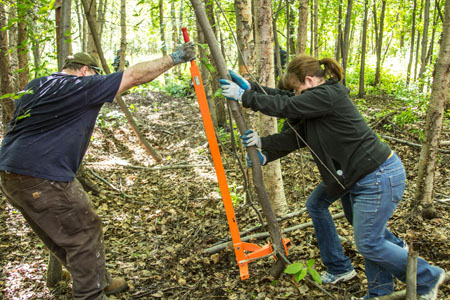
For more information visit:
Anchorage Park Foundation or the Alaska Natural Heritage Program
Alternative Plants for European Bird Cherry
